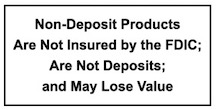What is an MLM?
Multi-Level Marketing (MLM) companies often present themselves as exciting opportunities for financial freedom- promising high earnings, flexible schedules, and a supportive community. Before accepting their claims at face value, it’s crucial to thoroughly research and understand the potential risks involved. While some people do make money with MLMs, many do not, and the risks are often hidden behind flashy claims.
Multi-Level Marketing, also known as network marketing or direct selling, is a business model where individuals, known as distributors or representatives, sell products directly to consumers. However, MLMs have an additional layer: participants are encouraged to recruit others to join the company and sell the products as well. This creates a hierarchical structure where distributors earn money not only from their personal sales but also from the sales made by their recruits, known as their “downline.”
While MLM companies are legal, their structure can sometimes resemble illegal pyramid schemes, which focus primarily on recruitment rather than product sales. This blurred line is why it’s crucial to understand how the MLM you’re considering operates.
Key Risks to Consider
- High Upfront Costs: Many MLMs require participants to purchase starter kits or products upfront, and there may be ongoing costs to stay active within the program, such as monthly product purchases or fees for training and events. These expenses can quickly add up, especially if you’re not making sales.
- Low Success Rate: Research shows that most MLM participants earn little to no money. According to a Forbes article, 99% of MLM participants lose money, with only a small percentage of distributors making a profit. The top earners often achieve their status through aggressive recruiting, while those at the bottom struggle to break even.
- Recruitment Pressure: MLMs place heavy emphasis on recruiting others to join the business. This is often the primary way to advance in the company, as commissions from your downline can be more profitable than personal sales. If you’re uncomfortable with recruitment or don’t have a large network, this can be a significant hurdle.
- Time Commitment: Success in MLMs is not just about selling products; it requires a large time commitment to recruit others, train your team, and attend meetings or events. Despite this effort, the earnings potential is limited for most participants.
- Deceptive Disclosures: MLM companies often provide earnings disclosures that can make the opportunity appear more profitable than it is. The Federal Trade Commission (FTC) cautions that these statements might show impressive average earnings but fail to disclose that the vast majority of participants do not earn enough to cover their costs. It’s important to read the fine print and ask questions about what those numbers really mean.
Interesting Facts About MLMs
- Limited Control Over Products: As an MLM distributor, you don’t own the products you sell. The company sets prices, determines what products are available, and may even require you to purchase certain items regularly. This limits your ability to run the business on your terms.
- High Dropout Rates: According to that same article by Forbes, half of MLM participants drop out within the first year. Many people find the costs, pressure, and lack of income unsustainable.
- The Top 1% Earns the Most: In most MLM companies, the majority of the wealth is concentrated at the top. Those who entered the program early and successfully built large downlines are often the only ones making substantial income, while newer recruits struggle to achieve similar results.
Disclosures: What to look for in the Small Print
When reviewing an MLM’s disclosure statements, pay attention to:
- Average Earnings: The figures presented might be skewed by a small number of top earners. Always ask how many people are truly earning those “average” amounts.
- Expenses: Ensure you fully understand any ongoing costs, such as required purchases, and factor these into your calculations of potential profit.
- Time Frame: Some top earners have been involved for years. Ask how long it typically takes for new recruits to see substantial income (if at all).
- Refund Policies: Understand the company’s refund policies, especially for unsold inventory, to protect yourself if you decide the program isn’t right for you.
For more details on understanding MLM disclosure statements and protecting yourself, check out the FTC’s guide: What Are Multi-Level Marketing (MLM) Disclosure Statements Really Telling You?.
MLM opportunities may seem enticing, but they come with significant risks. Before joining, carefully review all disclosures, ask tough questions, and be realistic about your earning potential. MLMs are rarely the financial windfall they claim to be, and it’s essential to protect yourself from false promises and the potential for financial loss. Most importantly, don’t be afraid to walk away if something feels off—after all, legitimate business opportunities don’t rely on pressure or ambiguous claims to attract participants.

